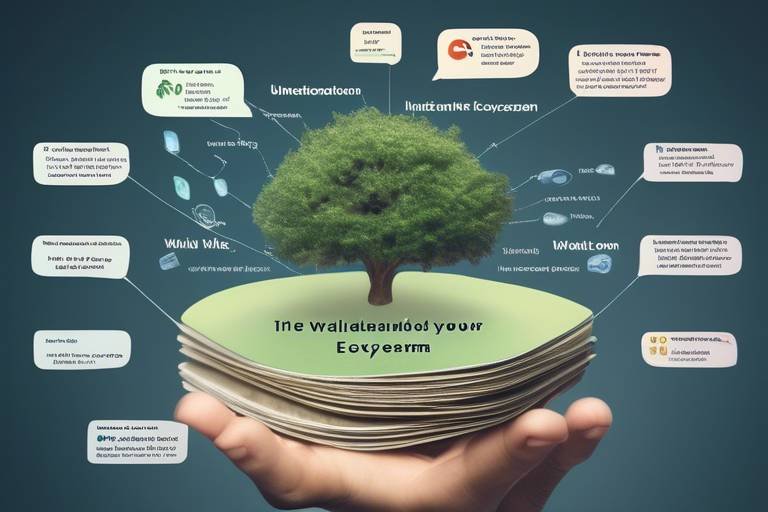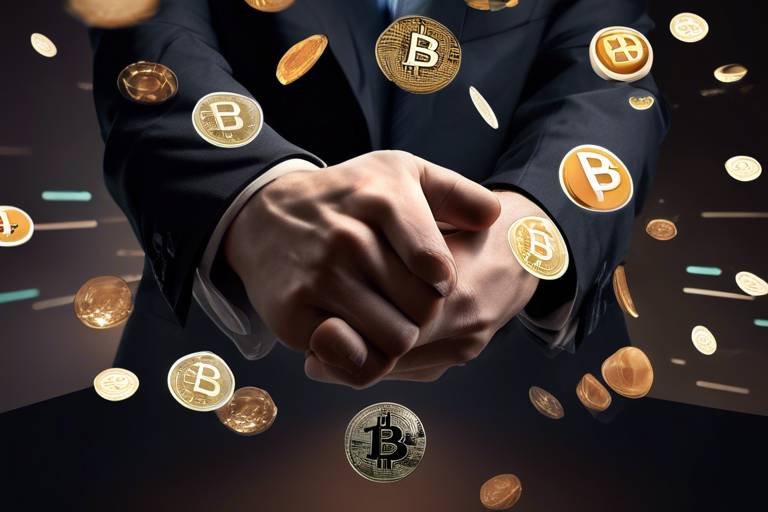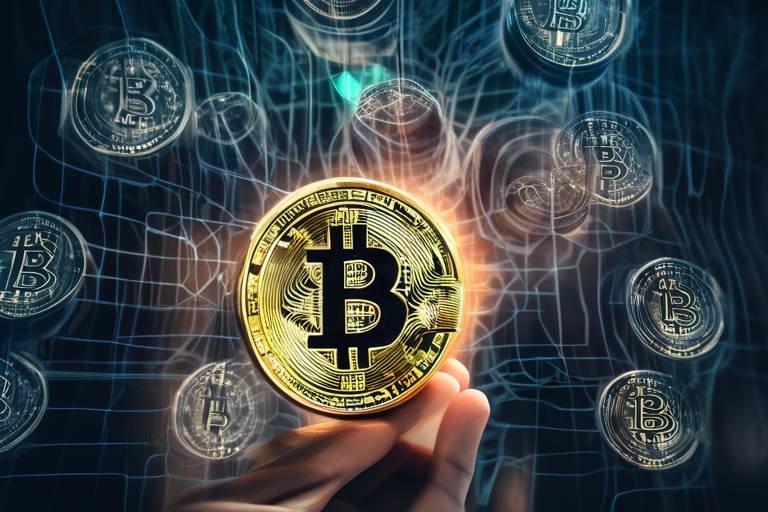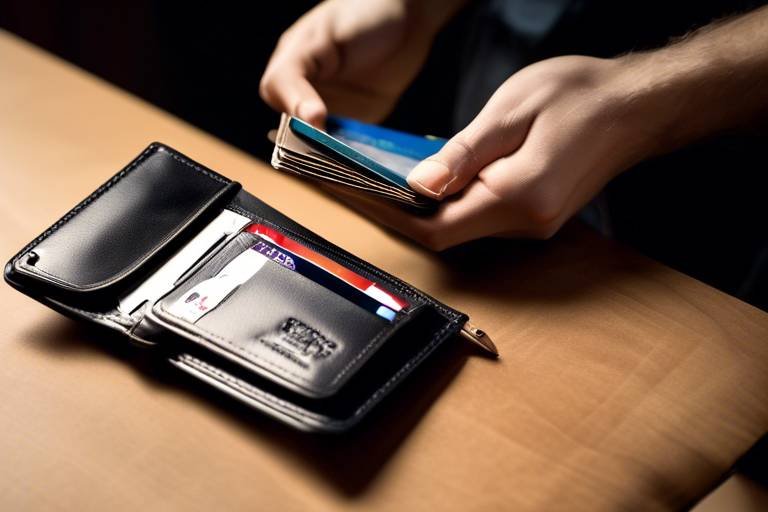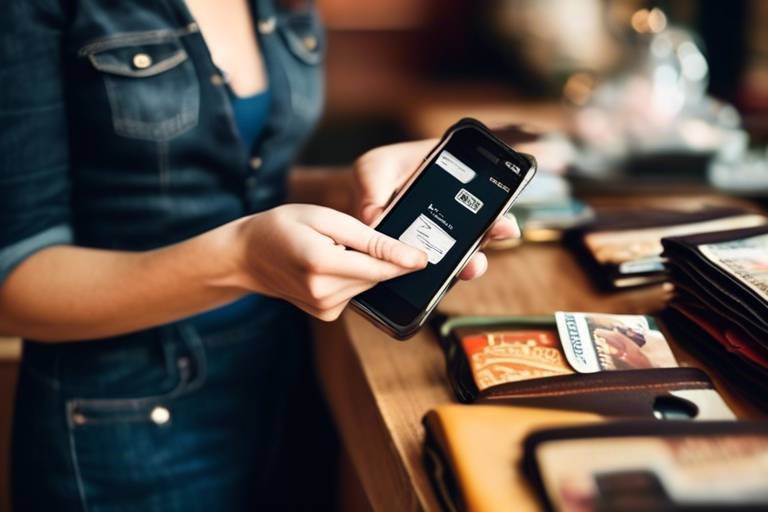Understanding Wallet Ecosystems - How They Work Together
In today's fast-paced digital world, the concept of a wallet ecosystem has become increasingly relevant. But what exactly does that mean? Imagine a bustling marketplace where vendors, buyers, and various services interact seamlessly. This is akin to how wallet ecosystems operate, connecting different components to create a smooth user experience for digital transactions. At the heart of these ecosystems are digital wallets, payment gateways, and security protocols, all working in harmony to facilitate transactions. Understanding how these elements interconnect is essential for anyone looking to navigate the landscape of digital finance.
Digital wallets serve as the cornerstone of this ecosystem, allowing users to store payment information securely and access it with ease. They can be likened to a digital purse, where all your cards and cash are neatly organized and readily available. Payment gateways act as the bridge between these wallets and merchants, ensuring that transactions are processed quickly and efficiently. Meanwhile, security protocols protect sensitive information, safeguarding users from potential threats. Together, these components create a robust framework that enhances the overall user experience.
As we delve deeper into the intricacies of wallet ecosystems, it becomes clear that they are not just standalone entities. They are interconnected systems that rely on each other to function optimally. For instance, the effectiveness of a mobile wallet is often dependent on the reliability of the payment gateway it uses. Similarly, the security measures in place can significantly impact user trust and engagement. Therefore, understanding the synergy between these components is crucial for anyone looking to make informed decisions in the realm of digital transactions.
Wallet ecosystems consist of various components, including digital wallets, payment gateways, and security protocols. Understanding these elements is crucial for grasping how they interact to facilitate seamless transactions.
Digital wallets come in various forms, such as mobile wallets, web wallets, and hardware wallets. Each type serves different user needs and offers unique features, impacting the overall wallet ecosystem.
Mobile wallets are applications that allow users to store payment information on their smartphones. They provide convenience and accessibility, making transactions quick and easy for consumers on the go. Just think of them as your digital wallet that fits right in your pocket!
Mobile wallets offer numerous advantages, including enhanced security, rewards programs, and easy integration with other services. These benefits contribute to their growing popularity among users. For instance, users can earn points or cash back for every transaction, making spending more rewarding.
Despite their advantages, mobile wallets face challenges such as security concerns and limited acceptance by merchants. Understanding these challenges helps users make informed decisions. It's essential to know that while mobile wallets are convenient, they are not without risks, such as potential fraud or hacking attempts.
Web wallets are browser-based applications that enable users to manage their digital assets online. They provide flexibility but may pose security risks compared to other wallet types. Users should weigh the convenience of web wallets against the potential vulnerabilities they might introduce.
Security is paramount in wallet ecosystems. Various measures, including encryption and two-factor authentication, are implemented to protect users' sensitive information and prevent unauthorized access. The importance of these measures cannot be overstated, as they form the backbone of trust in digital transactions.
Encryption techniques play a vital role in safeguarding data within wallet ecosystems. Understanding these methods helps users appreciate the importance of security in their digital transactions. Encryption transforms sensitive data into a coded format, making it unreadable to unauthorized users. This is similar to locking your valuables in a safe—only those with the key can access what's inside.
Two-factor authentication adds an extra layer of security, requiring users to verify their identity through multiple means. This practice significantly reduces the risk of unauthorized access to wallets. Think of it as having both a key and a password to enter your home; even if someone has one, they still can't get in without the other.
Interoperability allows different wallet systems to communicate and work together seamlessly. This feature enhances user experience and expands the functionality of digital wallets across various platforms. Imagine being able to use your wallet at any store, regardless of the payment system they use—this is the power of interoperability.
Interoperability facilitates easier transactions and broader acceptance of digital wallets. Users can transact across various platforms without the need for multiple wallet applications. This not only simplifies the user experience but also encourages more businesses to adopt digital payment solutions.
While interoperability offers benefits, it also presents challenges such as standardization and compatibility issues. Addressing these challenges is essential for the future of wallet ecosystems. Without a common framework, different wallets may struggle to communicate, leading to a fragmented user experience.
The future of wallet ecosystems is promising, with advancements in technology and user preferences shaping their evolution. Innovations like decentralized wallets and integration with emerging technologies will redefine digital transactions. As we move forward, we can expect wallet ecosystems to become even more user-friendly and secure.
Decentralized wallets offer users greater control over their assets by eliminating intermediaries. This shift towards decentralization is a significant trend in the wallet ecosystem landscape. Users are increasingly seeking solutions that empower them, and decentralized wallets are at the forefront of this movement.
The integration of wallet ecosystems with technologies like blockchain and AI is set to enhance security, efficiency, and user experience in digital transactions, paving the way for future innovations. Imagine a wallet that not only stores your money but also learns your spending habits to offer personalized recommendations—this is the future we are heading towards.
- What is a digital wallet? A digital wallet is an electronic device or online service that allows individuals to make electronic transactions.
- Are mobile wallets safe to use? Yes, mobile wallets are generally safe, especially when they employ strong security measures like encryption and two-factor authentication.
- What are the advantages of using a web wallet? Web wallets provide flexibility and easy access to digital assets from any device with internet connectivity.
- How does interoperability benefit users? Interoperability allows users to transact across different wallet platforms, enhancing convenience and acceptance.

The Components of Wallet Ecosystems
Wallet ecosystems are like intricate webs, weaving together various components that work in harmony to create a seamless digital transaction experience. Understanding these elements is crucial for anyone looking to navigate the world of digital payments effectively. At the heart of these ecosystems are digital wallets, which serve as the primary interface for users to store and manage their payment information. But that’s just the beginning!
In addition to digital wallets, there are payment gateways that act as the bridge between the wallet and the merchant, facilitating the actual transaction process. Think of payment gateways as the postal service for your money, ensuring that your funds arrive at their destination safely and efficiently. Without these gateways, the entire system would be like a car without wheels—great in theory, but not very functional in practice.
Another critical component is the security protocols that safeguard user information. In a world where data breaches are all too common, these protocols are essential for protecting sensitive information from unauthorized access. They include various measures such as encryption and two-factor authentication, which ensure that only the rightful owner can access their wallet. It’s like having a digital vault with multiple locks—just because someone has the key doesn’t mean they can easily get in!
To give you a clearer picture, let’s break down these components in a simple table:
| Component | Function |
|---|---|
| Digital Wallets | Store and manage payment information |
| Payment Gateways | Facilitate transactions between wallets and merchants |
| Security Protocols | Protect sensitive user data from unauthorized access |
Each of these components plays a vital role in the overall functionality of wallet ecosystems. Together, they create an environment where users can conduct transactions with confidence and ease. The synergy between these elements not only enhances user experience but also promotes the adoption of digital wallets in everyday life.
In summary, understanding the components of wallet ecosystems is like having a roadmap to navigate the bustling city of digital transactions. With digital wallets, payment gateways, and robust security protocols working together, users can enjoy a smooth and secure payment experience. So, the next time you pull out your mobile wallet for a quick purchase, remember the intricate system that makes it all possible!
- What is a digital wallet? A digital wallet is an application or software that allows users to store payment information and make transactions electronically.
- How do payment gateways work? Payment gateways process transactions by securely transmitting payment information between the customer, the merchant, and the bank.
- Why is security important in wallet ecosystems? Security is crucial to protect sensitive information from data breaches and unauthorized access, ensuring safe transactions.

Types of Digital Wallets
When it comes to digital wallets, there isn’t a one-size-fits-all solution. Instead, they come in various forms, each tailored to meet specific user needs and preferences. Understanding these different types of digital wallets is essential, as they play a significant role in the overall wallet ecosystem. Let's dive deeper into the main types of digital wallets: mobile wallets, web wallets, and hardware wallets.
Mobile wallets are perhaps the most popular type today, thanks to the ubiquity of smartphones. These applications allow users to store payment information directly on their devices, making transactions quick and easy. Imagine being at a coffee shop, and instead of fumbling for cash or a card, you simply tap your phone to pay. That’s the convenience mobile wallets offer! They often come with features like loyalty programs, rewards, and even the ability to send money to friends instantly.
On the other hand, we have web wallets, which are browser-based applications. These wallets enable users to manage their digital assets online, providing flexibility and ease of access from any device with internet connectivity. However, while they are convenient, web wallets can pose security risks. Since they are online, they are susceptible to hacking attempts, making it crucial for users to choose reputable providers and implement strong security measures.
Lastly, there are hardware wallets. These are physical devices that store a user's private keys offline, providing a high level of security. Think of them as a safe for your digital assets. While they may not be as convenient for everyday transactions, they are ideal for long-term storage of cryptocurrencies or other sensitive information. Users who prioritize security often opt for hardware wallets, especially in an age where cyber threats are rampant.
In summary, the different types of digital wallets cater to various needs:
- Mobile Wallets: Convenient and accessible, ideal for everyday transactions.
- Web Wallets: Flexible but can be vulnerable to online threats.
- Hardware Wallets: Highly secure, perfect for long-term storage of digital assets.
As you can see, each type of digital wallet serves a unique purpose within the wallet ecosystem. Understanding these differences not only helps users choose the right wallet for their needs but also enhances their overall experience in managing digital transactions.
1. What is a digital wallet?
A digital wallet is an electronic device or online service that allows individuals to make electronic transactions, store payment information, and manage digital assets securely.
2. Are mobile wallets safe to use?
While mobile wallets offer convenience, their security depends on the provider and the user's practices. Always choose reputable wallets and enable security features like two-factor authentication.
3. Can I use a web wallet for cryptocurrency?
Yes, web wallets can be used for cryptocurrency, but they may carry higher risks compared to hardware wallets. It's essential to ensure that the web wallet you choose has strong security measures in place.
4. What is the best type of digital wallet for everyday use?
Mobile wallets are generally the best choice for everyday transactions due to their convenience and ease of use. However, users should assess their individual needs before making a choice.
5. How do hardware wallets work?
Hardware wallets store your private keys offline, making them less susceptible to hacking. You connect them to a computer or smartphone when you need to make a transaction, providing an extra layer of security.

Mobile Wallets
Mobile wallets have revolutionized the way we handle transactions in our daily lives. Imagine having all your payment methods securely stored in your pocket, accessible with just a tap on your smartphone. This convenience is what makes mobile wallets so appealing to consumers today. They are not just applications; they are a gateway to a more efficient and streamlined way of managing finances. With mobile wallets, users can store credit and debit card information, loyalty cards, and even digital currencies, all in one place.
One of the standout features of mobile wallets is their ease of use. Users can make purchases at physical stores by simply scanning a QR code or tapping their phone against a payment terminal. This quick transaction process eliminates the need to rummage through a wallet to find cash or cards. Additionally, mobile wallets often support various payment methods, including NFC (Near Field Communication), making them versatile for different shopping environments.
Furthermore, mobile wallets provide an added layer of security that traditional wallets cannot offer. Most mobile wallets utilize advanced encryption technologies and biometric authentication, such as fingerprint or facial recognition, to ensure that only the rightful owner can access their funds. This significantly reduces the risk of fraud and unauthorized transactions. However, while the security measures are robust, users must remain vigilant about their personal information and ensure their devices are protected.
Despite their numerous benefits, mobile wallets are not without challenges. One major hurdle is merchant acceptance. While more retailers are adopting mobile payment solutions, there are still many businesses that do not support mobile wallets, limiting where users can utilize this technology. Additionally, some users may feel hesitant to transition from traditional payment methods due to concerns about privacy and data security.
In summary, mobile wallets are an exciting innovation in the realm of digital payments, offering convenience, enhanced security, and a user-friendly experience. As technology continues to evolve, we can expect mobile wallets to become even more integrated into our daily routines, making transactions smoother and more efficient.
- What is a mobile wallet? A mobile wallet is a digital application that allows users to store payment information and make transactions using their smartphones.
- Are mobile wallets safe to use? Yes, mobile wallets use encryption and biometric authentication to enhance security, but users should still practice caution with their personal information.
- Can I use a mobile wallet for online purchases? Absolutely! Many mobile wallets can be used for both in-store and online transactions.
- What happens if I lose my phone? Most mobile wallets have recovery options, but it's essential to report the loss to your wallet provider immediately to protect your information.

Benefits of Mobile Wallets
Mobile wallets have revolutionized the way we handle our finances, offering a plethora of benefits that cater to the modern user's needs. One of the most significant advantages is the enhanced security they provide. Unlike traditional wallets, which can be lost or stolen, mobile wallets use advanced encryption techniques to protect sensitive information. This means that even if someone gains access to your phone, they won't be able to access your financial data without the necessary authentication.
Moreover, mobile wallets often come with built-in rewards programs that incentivize users for their transactions. For instance, many mobile wallets partner with retailers to offer cash back, discounts, or loyalty points, turning everyday purchases into opportunities for savings. This feature not only enhances the user experience but also encourages consumers to adopt mobile wallets as their primary payment method.
Another compelling reason to embrace mobile wallets is their seamless integration with other services. Users can link their mobile wallets to various applications, such as ride-sharing or food delivery services, making transactions quick and effortless. Imagine ordering your favorite meal and paying for it with just a tap on your phone—no fumbling for cash or cards required!
However, the convenience doesn't stop there. Mobile wallets also facilitate international transactions with ease. Users can send money across borders without the hefty fees typically associated with traditional banking methods. This opens up a world of possibilities for travelers and expatriates who need to manage finances in multiple currencies.
In addition to these features, mobile wallets often include contactless payment options. This technology allows users to make payments simply by tapping their phones against a payment terminal, which is not only faster but also reduces the risk of virus transmission—a particularly relevant concern in today's world.
In summary, the benefits of mobile wallets are numerous and compelling. From enhanced security and rewards programs to seamless integration with other services and contactless payment options, they offer a convenient and efficient way to manage finances. As technology continues to evolve, we can expect mobile wallets to become even more integral to our daily lives, transforming the way we think about money and transactions.

Challenges of Mobile Wallets
While mobile wallets have revolutionized the way we conduct transactions, they are not without their challenges. One of the most pressing issues is security concerns. With the rise of digital transactions, hackers are increasingly targeting mobile wallets to steal sensitive information such as credit card details and personal identification. Users often underestimate the risks associated with storing their financial information on mobile devices, making them vulnerable to phishing attacks and malware.
Another significant challenge is the limited acceptance by merchants. Although mobile wallets are gaining traction, not all retailers are equipped to accept them. This can lead to frustration for users who may find themselves unable to use their preferred payment method in certain locations. Consequently, the lack of widespread acceptance can hinder the overall adoption of mobile wallets, as consumers may be reluctant to rely on a payment method that isn't universally accepted.
Usability issues also pose a challenge for mobile wallets. Some users, especially those who are not tech-savvy, may struggle with the interface or the process of setting up their wallets. If a mobile wallet is difficult to navigate, users might abandon it altogether, opting for more traditional payment methods. This highlights the importance of user-friendly design and clear instructions for mobile wallet applications.
Additionally, mobile wallets can sometimes face technical glitches that disrupt service. These issues can range from app crashes to connectivity problems, which can prevent users from completing transactions. Such disruptions not only frustrate users but can also lead to a loss of trust in the mobile wallet service.
Lastly, there is the concern of data privacy. Many users are apprehensive about how their personal data is collected, stored, and used by mobile wallet providers. The fear of data breaches and misuse of personal information can deter potential users from adopting mobile wallets. Companies must prioritize transparency and user consent to build trust and encourage wider usage.
In summary, while mobile wallets offer a plethora of benefits, they also come with challenges that need to be addressed. From security concerns and limited acceptance to usability issues and data privacy worries, understanding these challenges is crucial for users looking to navigate the mobile wallet landscape effectively.
- What are mobile wallets? Mobile wallets are applications that store payment information on smartphones, allowing users to make transactions conveniently.
- Are mobile wallets safe to use? While they offer enhanced security features, users must remain vigilant against potential threats such as phishing and malware.
- Why are some merchants not accepting mobile wallets? Acceptance varies by location and merchant readiness; not all retailers have integrated mobile payment systems.
- How can I improve the security of my mobile wallet? Use strong passwords, enable two-factor authentication, and regularly update your app to enhance security.
- What should I do if my mobile wallet app crashes? Try restarting the app or your device, and if problems persist, contact the app’s customer support for assistance.

Web Wallets
Web wallets are browser-based applications that allow users to manage their digital assets online, providing a convenient way to store and transact with cryptocurrencies and other digital currencies. Unlike mobile wallets, which are tied to a specific device, web wallets can be accessed from any device with an internet connection. This flexibility makes them particularly appealing to users who prefer to manage their finances from multiple locations or devices.
However, while the convenience of web wallets is undeniable, they also come with certain risks. The reliance on internet connectivity means that they are susceptible to online threats, such as hacking and phishing attacks. Users must remain vigilant and adopt best practices to safeguard their information. For instance, using strong, unique passwords and enabling two-factor authentication can significantly enhance security.
Another aspect to consider is the user experience. Many web wallets come equipped with intuitive interfaces that simplify the process of sending and receiving funds. This ease of use can be especially beneficial for newcomers to the world of digital currencies, making it easier for them to engage with the technology. Furthermore, web wallets often offer features like transaction history, balance tracking, and integration with various exchanges, which can enhance the overall user experience.
Despite their advantages, web wallets may not be suitable for everyone. For users holding significant amounts of digital assets, the potential risks associated with online storage might outweigh the benefits. In such cases, considering alternatives like hardware wallets could provide a more secure option. Hardware wallets store private keys offline, making them less vulnerable to online attacks.
In summary, web wallets serve as a double-edged sword in the digital asset management landscape. On one hand, they provide unparalleled convenience and accessibility; on the other hand, they expose users to potential security threats. Users should weigh these factors carefully when choosing a wallet type that aligns with their needs and risk tolerance.
- What is a web wallet? A web wallet is an online application that allows users to store and manage their digital currencies through a web browser.
- Are web wallets safe to use? While web wallets offer convenience, they are susceptible to online threats. It is essential to implement security measures like strong passwords and two-factor authentication.
- Can I access my web wallet from multiple devices? Yes, web wallets can be accessed from any device with an internet connection, making them highly flexible.
- What are the alternatives to web wallets? Alternatives include mobile wallets, which are app-based, and hardware wallets, which store assets offline for enhanced security.

Security Measures in Wallet Ecosystems
When it comes to digital transactions, security is not just a luxury—it's a necessity. Wallet ecosystems are designed with multiple layers of security to protect users from potential threats. Imagine your digital wallet as a high-tech vault; it needs robust locks and alarms to keep your valuables safe. In this section, we will explore various security measures that ensure your sensitive information remains private and secure.
One of the primary security measures employed in wallet ecosystems is encryption. This technique transforms your data into a coded format that can only be read by someone with the right decryption key. Think of it as a secret language that only you and your wallet understand. Encryption is crucial because it protects your information from hackers and unauthorized access. Without it, your financial data could be exposed, leading to identity theft and financial loss.
Another important aspect of wallet security is two-factor authentication (2FA). This method adds an extra layer of protection by requiring not just a password, but also a second verification step. For instance, after entering your password, you might receive a text message with a code that you need to input to complete the login process. This makes it significantly harder for unauthorized users to access your wallet, even if they somehow acquire your password. In a world where cyber threats are increasingly sophisticated, 2FA is like having a security guard at the entrance of your vault.
Furthermore, many wallet ecosystems implement biometric authentication. This cutting-edge technology uses unique physical traits—like your fingerprint or facial recognition—to verify your identity. It's like having a personal bodyguard who only lets you in. Biometric authentication is not only convenient but also adds a formidable barrier against unauthorized access, making it a favored choice among tech-savvy users.
It's also essential for users to be aware of best practices for maintaining wallet security. Here are some tips to keep your digital assets safe:
- Regularly update your wallet software: Keeping your wallet software up-to-date ensures that you have the latest security features and patches.
- Use strong, unique passwords: Avoid using easily guessable passwords. A combination of letters, numbers, and symbols is best.
- Be cautious with public Wi-Fi: Avoid accessing your wallet over unsecured networks, as they can be breeding grounds for cybercriminals.
In summary, security measures in wallet ecosystems are vital for safeguarding your financial information. By leveraging encryption, two-factor authentication, and biometric verification, these systems create a formidable defense against potential threats. However, users must also take proactive steps to enhance their own security. After all, in the digital world, a little caution goes a long way in protecting your assets.
Q: What is the most common security measure in digital wallets?
A: The most common security measure is encryption, which protects your data by converting it into a coded format that unauthorized users cannot read.
Q: How does two-factor authentication work?
A: Two-factor authentication requires users to provide two forms of verification—typically a password and a code sent to their mobile device—before accessing their wallet.
Q: Are biometric authentication methods safe?
A: Yes, biometric authentication methods, such as fingerprint and facial recognition, are considered secure because they rely on unique physical traits that are difficult to replicate.
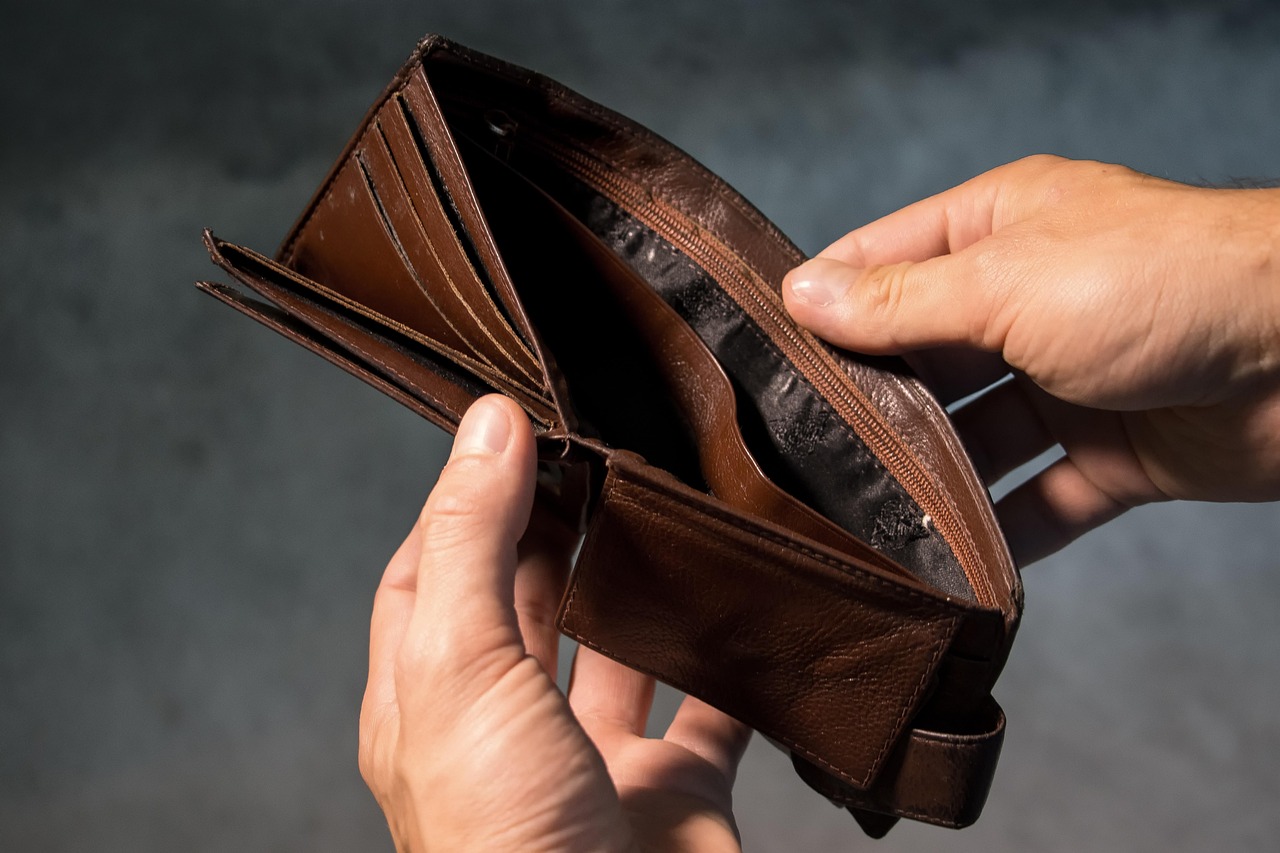
Encryption Techniques
In the realm of digital transactions, serve as the backbone of security, safeguarding sensitive information from prying eyes. Imagine sending a confidential letter through the postal service; you wouldn't want anyone else to read it, right? Similarly, when we conduct transactions online, encryption ensures that our data remains private and secure. At its core, encryption transforms readable data into an unreadable format, allowing only authorized parties to decipher it.
There are several key encryption techniques commonly used in wallet ecosystems:
- Symmetric Encryption: This method uses a single key for both encryption and decryption. While it's efficient and fast, the challenge lies in securely sharing the key between parties.
- Asymmetric Encryption: Unlike symmetric encryption, this technique employs a pair of keys: a public key, which can be shared with anyone, and a private key, which is kept secret. This method enhances security, especially in digital wallets, as it allows users to share their public key without compromising their private key.
- Hashing: Though not a form of encryption in the traditional sense, hashing is crucial for verifying data integrity. It transforms data into a fixed-size string of characters, which is unique to the original data. If even a single character changes, the hash will be completely different, alerting users to potential tampering.
Understanding these techniques is vital for users who wish to navigate the digital landscape confidently. For instance, when you make a transaction using a digital wallet, your payment information is often encrypted using asymmetric encryption. This means that while the merchant can see your public key to process the payment, they cannot access your private key, keeping your funds secure.
Moreover, encryption is not a one-size-fits-all solution. Different wallets may implement various encryption methods based on their specific needs and the level of security they aim to provide. As technology evolves, so do encryption techniques, continually adapting to counteract emerging threats. Therefore, staying informed about these advancements is essential for users who want to protect their digital assets effectively.
In conclusion, encryption techniques are the unsung heroes of wallet ecosystems. They not only protect sensitive information but also foster trust between users and service providers. As we venture further into the digital age, understanding and appreciating these techniques will empower users to make informed decisions about their financial security.
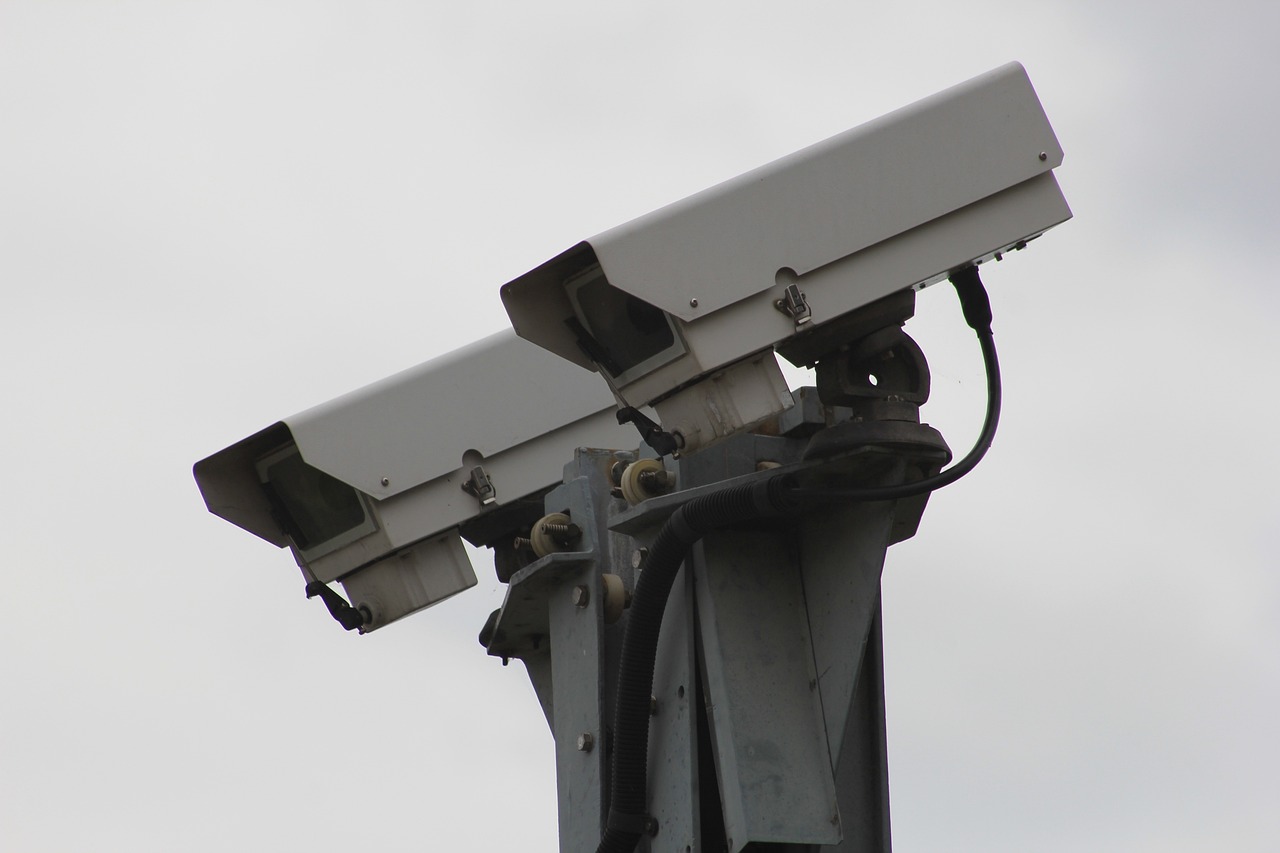
Two-Factor Authentication
Two-Factor Authentication (2FA) is like adding a second lock to your door; it significantly enhances your security by requiring not just a password, but also another piece of information to verify your identity. In the world of digital wallets, where sensitive information and financial data are at play, implementing 2FA is crucial. It serves as a safeguard against unauthorized access, ensuring that even if someone manages to obtain your password, they cannot simply waltz into your wallet without that second form of verification.
Typically, the second factor can be something you have, like a smartphone app that generates a time-sensitive code, or something you are, such as a fingerprint or facial recognition. This dual verification process makes it exponentially harder for hackers to breach your wallet. To illustrate, let’s consider a scenario:
| Scenario | Without 2FA | With 2FA |
|---|---|---|
| Hacker obtains your password | Immediate access to your wallet | No access without second verification step |
| Hacker attempts to change account settings | Can easily do so | Requires additional verification |
This table clearly shows the stark difference in security levels when using Two-Factor Authentication. While you might think your password is strong enough, it’s essential to remember that passwords can be compromised through various means, such as phishing attacks or data breaches. With 2FA, even if your password is exposed, the hacker would still need that second piece of information, which is often much harder to obtain.
Moreover, the convenience of 2FA has improved significantly over the years. Many digital wallets now offer user-friendly options, such as biometric authentication (like fingerprints) or push notifications to your mobile device that require a simple tap to approve transactions. This means you can enjoy heightened security without sacrificing ease of use.
In conclusion, adopting Two-Factor Authentication in your digital wallet is not just a recommendation; it’s a necessity in today’s digital landscape. By adding that extra layer of security, you’re not only protecting your assets but also enhancing your peace of mind. So, why take chances? Make 2FA a standard part of your wallet security practices today!
- What is Two-Factor Authentication?
Two-Factor Authentication (2FA) is a security process that requires two separate forms of identification to access an account, providing an extra layer of protection. - How does 2FA work?
2FA works by requiring a user to provide something they know (like a password) and something they have (like a smartphone app that generates a code) to gain access. - Is 2FA necessary for digital wallets?
Yes, 2FA is highly recommended for digital wallets as it significantly reduces the risk of unauthorized access and enhances overall security. - What are some common methods of 2FA?
Common methods include SMS codes, authentication apps, email verification, and biometric factors like fingerprints or facial recognition.

Interoperability Among Wallets
In the rapidly evolving world of digital transactions, interoperability among wallets is becoming increasingly crucial. Imagine a bustling marketplace where every vendor accepts only their unique currency; transactions would be cumbersome and frustrating. Now, picture a marketplace where all vendors accept a universal currency, allowing for smooth and efficient exchanges. This is the essence of interoperability among digital wallets. It enables different wallet systems to communicate and work together seamlessly, enhancing the overall user experience.
One of the primary benefits of interoperability is that it facilitates easier transactions across various platforms. Users can transact without being tied to a specific wallet application, which can be a game-changer in a world where convenience is king. For instance, if you have a mobile wallet that integrates with a web wallet, you can easily transfer funds without the hassle of switching between different platforms. This flexibility not only saves time but also broadens the acceptance of digital wallets among merchants.
However, achieving interoperability is not without its challenges. Standardization and compatibility issues often arise, making it difficult for different systems to work together. For example, if one wallet uses a proprietary technology that another wallet does not support, users may find themselves unable to complete transactions. Addressing these challenges is essential for the future of wallet ecosystems. As technology continues to advance, the push for universal standards that facilitate interoperability will become a priority for developers and users alike.
To illustrate the importance of interoperability, consider the following table that showcases the differences between interoperable and non-interoperable wallet systems:
| Feature | Interoperable Wallets | Non-Interoperable Wallets |
|---|---|---|
| Transaction Flexibility | High - Users can transact across multiple platforms | Low - Limited to specific platforms |
| Merchant Acceptance | Widespread - More merchants accept various wallets | Restricted - Fewer merchants accept specific wallets |
| User Experience | Enhanced - Seamless transactions lead to greater satisfaction | Frustrating - Users may face barriers in transactions |
As we look towards the future, the importance of interoperability among wallets cannot be overstated. As users demand more seamless experiences, wallet developers will need to prioritize creating systems that can communicate effectively with one another. This evolution will not only improve user satisfaction but also drive the adoption of digital wallets in everyday transactions.
- What is interoperability in wallet ecosystems? Interoperability refers to the ability of different digital wallet systems to work together, allowing users to transact seamlessly across various platforms.
- Why is interoperability important? It enhances user experience by allowing transactions without being restricted to a specific wallet, thus broadening merchant acceptance and improving transaction flexibility.
- What challenges does interoperability face? Challenges include standardization and compatibility issues, which can hinder different wallet systems from communicating effectively.
- How can users benefit from interoperable wallets? Users can enjoy easier transactions, greater merchant acceptance, and a more satisfying overall experience when using digital wallets.

Benefits of Interoperability
Interoperability in wallet ecosystems is like a bridge connecting different islands of digital transactions. When wallets can communicate with each other seamlessly, users experience a world of convenience that was previously unimaginable. One of the most significant benefits of interoperability is the enhanced user experience. Imagine being able to send money from your mobile wallet to a friend's web wallet without the hassle of switching apps or worrying about compatibility issues. This fluidity not only saves time but also encourages more people to adopt digital wallets.
Another notable advantage is the broader acceptance of digital wallets. In an interconnected wallet ecosystem, merchants can accept various payment methods without needing to integrate multiple systems. This flexibility makes it easier for businesses to cater to a wider audience, as customers can use their preferred wallets without fear of rejection at the checkout. Furthermore, interoperability fosters competition among wallet providers, pushing them to innovate and improve their services. As they strive to offer better features and user experiences, consumers ultimately reap the rewards.
Additionally, interoperability can lead to cost savings for users and merchants alike. By reducing the need for multiple wallet applications and the associated fees, users can enjoy lower transaction costs. For merchants, this means less overhead in managing different payment systems, allowing them to focus on what truly matters: growing their business. Moreover, as interoperability becomes more prevalent, we can expect to see a rise in
- Cross-platform transactions
- Enhanced loyalty programs
- Streamlined payment processes
In summary, interoperability in wallet ecosystems is a game-changer. It simplifies transactions, expands acceptance, encourages innovation, and reduces costs for users and merchants. As we continue to embrace digital transactions, the importance of interoperability cannot be overstated. It’s the glue that holds the wallet ecosystem together, ensuring that everyone can participate in this exciting digital economy.
What is interoperability in wallet ecosystems?
Interoperability refers to the ability of different wallet systems to communicate and work together seamlessly, allowing users to transact across various platforms without compatibility issues.
How does interoperability benefit users?
It enhances user experience by simplifying transactions, broadening acceptance of digital wallets, and fostering competition among wallet providers, which leads to better services.
Are there any challenges associated with interoperability?
Yes, challenges include standardization and compatibility issues that need to be addressed to ensure a smooth user experience across different wallet systems.
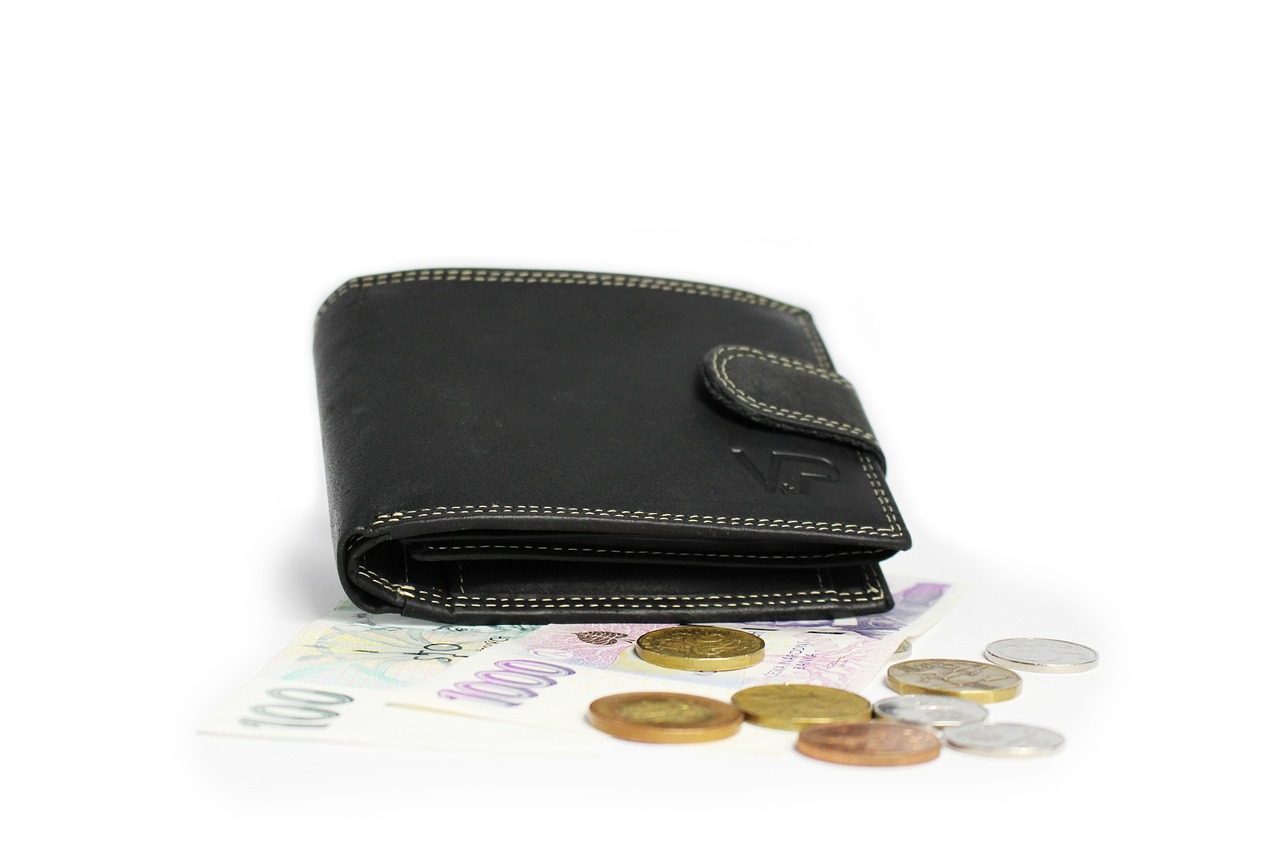
Challenges of Interoperability
Interoperability is a game-changer in the wallet ecosystem, allowing different systems to communicate effortlessly. However, this seamless interaction does not come without its challenges. One of the primary issues is standardization. With numerous wallet providers each using their own protocols and formats, achieving a common standard becomes a complex task. Imagine trying to fit different puzzle pieces together; without a uniform shape, it’s nearly impossible to create a cohesive picture.
Another challenge is compatibility. Different wallets may not support the same currencies or transaction types, which can lead to frustrating user experiences. For instance, if a user wants to send a payment using a specific cryptocurrency but their wallet does not support it, they are left in a lurch. This scenario highlights the necessity for wallets to not only communicate but also to understand each other's languages, so to speak.
Additionally, security concerns arise when wallets are designed to be interoperable. The more connections there are between different systems, the greater the risk of vulnerabilities. If one wallet is compromised, it could potentially expose others in the network. This chain reaction can lead to significant security breaches, which is a major deterrent for users considering the adoption of interoperable solutions.
Finally, the regulatory landscape poses its own set of challenges. Different regions have varying laws and regulations regarding digital transactions. This inconsistency can complicate the development of interoperable wallets, as developers must ensure compliance with multiple legal frameworks. For instance, a wallet that operates seamlessly in one country may face legal hurdles in another, making it difficult to maintain a unified user experience across borders.
In summary, while interoperability in wallet ecosystems offers exciting possibilities, it also presents significant challenges that need to be addressed. The journey towards a fully interoperable system requires collaboration among wallet providers, regulatory bodies, and users to create a secure, standardized, and compatible environment.
- What is interoperability in wallet ecosystems?
Interoperability refers to the ability of different digital wallets to communicate and work together seamlessly, allowing users to transact across various platforms without the need for multiple applications. - What are the main challenges of interoperability?
The main challenges include standardization, compatibility, security concerns, and navigating the regulatory landscape across different regions. - Why is standardization important?
Standardization is crucial because it ensures that all wallet systems can understand and process transactions in a uniform way, similar to how different banks use the same protocols for wire transfers. - How can security be maintained in interoperable wallets?
Implementing robust security measures such as encryption and two-factor authentication can help protect users' sensitive information and reduce the risk of breaches. - What does the future hold for interoperable wallet systems?
The future looks promising, with advancements in technology and a growing emphasis on user experience likely to drive innovations in interoperability, making digital transactions easier and more secure.
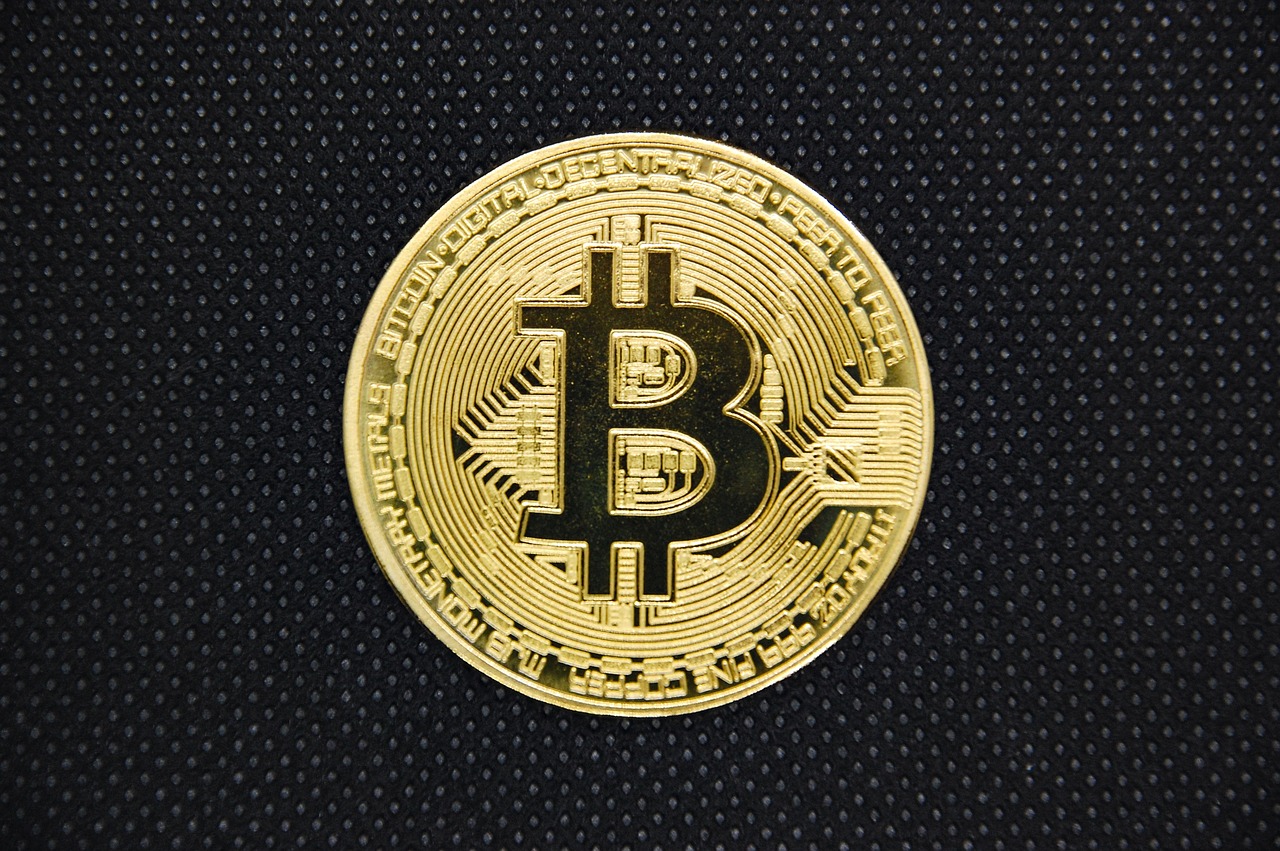
The Future of Wallet Ecosystems
The future of wallet ecosystems is not just bright; it's practically glowing with potential! As technology continues to advance at a breathtaking pace, we find ourselves on the brink of a digital revolution that will redefine how we manage our finances. Imagine a world where your wallet is not just a storage space for your money, but a comprehensive tool that integrates all aspects of your financial life. This is the direction in which wallet ecosystems are heading.
One of the most exciting trends on the horizon is the rise of decentralized wallets. These innovative wallets allow users to maintain greater control over their assets by eliminating the need for intermediaries, such as banks or payment processors. Think of it as having a personal vault where only you hold the keys! This shift towards decentralization not only enhances security but also empowers users, giving them the freedom to manage their funds without relying on third-party institutions.
Moreover, the integration of wallet ecosystems with emerging technologies like blockchain and artificial intelligence (AI) is set to revolutionize the way we conduct digital transactions. Blockchain technology offers unparalleled transparency and security, ensuring that every transaction is recorded and verifiable. Meanwhile, AI can analyze user behavior to provide personalized financial advice and enhance fraud detection. Together, these technologies will create a seamless and secure environment for digital transactions.
As we look to the future, we can expect wallet ecosystems to become increasingly interconnected. Imagine being able to use your digital wallet not only for payments but also for managing investments, tracking expenses, and even accessing loans—all from a single interface. This level of integration will simplify the user experience and make financial management more efficient than ever before.
However, with great potential comes significant challenges. As wallet ecosystems evolve, issues such as standardization and compatibility will need to be addressed. Different wallet providers must work together to ensure that their systems can communicate effectively, allowing users to transact seamlessly across various platforms. The future will require collaboration and innovation to overcome these hurdles and unlock the full potential of wallet ecosystems.
In conclusion, the future of wallet ecosystems is an exhilarating journey filled with possibilities. As we embrace decentralized solutions and integrate cutting-edge technologies, we are setting the stage for a financial landscape that is more secure, efficient, and user-friendly. So, buckle up and get ready for a ride into the future of digital finance!
- What are decentralized wallets? Decentralized wallets are digital wallets that allow users to control their funds without relying on intermediaries, enhancing security and user autonomy.
- How does blockchain technology improve wallet ecosystems? Blockchain technology offers transparency and security, ensuring that every transaction is recorded and verifiable, thus building trust among users.
- What challenges do wallet ecosystems face in the future? Key challenges include standardization and compatibility issues that must be addressed to enable seamless transactions across different wallet platforms.
- How will AI impact wallet ecosystems? AI can analyze user behavior to provide personalized financial advice and enhance fraud detection, improving overall user experience.

Decentralized Wallets
Decentralized wallets represent a revolutionary shift in how we manage and interact with our digital assets. Unlike traditional wallets that rely on centralized authorities, decentralized wallets empower users by giving them complete control over their funds. This means that your assets are stored directly on the blockchain, and you, as the user, hold the private keys. Imagine having a vault that only you can access, without any middlemen or banks controlling your wealth. This level of autonomy is one of the primary attractions of decentralized wallets.
In the world of decentralized wallets, security is a top priority. Since there is no central authority, the responsibility of safeguarding your assets falls entirely on you. This might sound daunting, but it actually enhances security when done right. Users must take proactive measures to protect their private keys, as losing them means losing access to their funds permanently. To help illustrate this, consider the following:
| Feature | Decentralized Wallets | Centralized Wallets |
|---|---|---|
| Control | Full control by the user | Control by a third party |
| Security | User must secure private keys | Security managed by the provider |
| Accessibility | Accessible from anywhere with the correct keys | Access may be restricted |
Moreover, decentralized wallets facilitate peer-to-peer transactions, allowing users to send and receive funds without intermediaries. This not only speeds up transactions but also reduces fees, making it more cost-effective for users. Imagine sending money to a friend across the globe without incurring hefty transfer fees—this is the beauty of decentralized wallets!
However, it's essential to acknowledge the challenges that come with this revolutionary approach. While decentralized wallets offer increased control and reduced costs, they can also be less user-friendly, especially for those who are not tech-savvy. The responsibility of managing private keys can be overwhelming for beginners, leading to potential loss of funds. Therefore, education and awareness are crucial in navigating this new landscape.
As we look to the future, the adoption of decentralized wallets is expected to rise. With advancements in user interfaces and educational resources, more individuals will likely embrace this technology. The potential for integrating decentralized wallets with emerging technologies, such as artificial intelligence and blockchain innovations, could further enhance their functionality and security.
- What is a decentralized wallet? A decentralized wallet is a digital wallet that allows users to store and manage their cryptocurrencies without relying on a central authority. Users hold their private keys, giving them complete control over their assets.
- Are decentralized wallets safe? While decentralized wallets can be secure, they require users to take responsibility for their private keys. If you lose your keys, you lose access to your funds permanently. It's essential to use strong security practices.
- Can I use decentralized wallets for everyday transactions? Yes, many decentralized wallets support various cryptocurrencies, allowing users to make transactions, send money, and even interact with decentralized applications (dApps).
- What are the risks associated with decentralized wallets? The primary risks include the potential loss of private keys, user error, and the complexity of managing a decentralized wallet. It's crucial to educate yourself and follow best practices to mitigate these risks.

Integration with Emerging Technologies
The integration of wallet ecosystems with emerging technologies is not just a trend; it’s a revolution that’s transforming how we perceive and execute digital transactions. Imagine a world where your wallet is not merely a storage space for your money but a sophisticated tool that leverages blockchain, artificial intelligence, and even Internet of Things (IoT) to enhance your financial interactions. This evolution is akin to upgrading from a basic flip phone to a smartphone—suddenly, everything is more interconnected and efficient.
One of the most significant advancements is the use of blockchain technology. Blockchain provides a decentralized and secure framework for transactions, ensuring that every exchange is transparent and traceable. This technology reduces fraud and increases trust among users, as every transaction is recorded on an immutable ledger. For instance, when you make a payment using a blockchain-enabled wallet, you can be confident that your transaction is not only secure but also verifiable by anyone on the network.
Moreover, the incorporation of artificial intelligence into wallet ecosystems is enhancing user experience in remarkable ways. AI algorithms can analyze spending patterns, recommend budgeting strategies, and even provide personalized offers based on your preferences. Imagine receiving a notification about a discount at your favorite coffee shop just as you’re about to make a purchase! This level of personalization not only enriches the user experience but also fosters a deeper connection between consumers and brands.
Additionally, the integration of wallets with the Internet of Things (IoT) is paving the way for seamless transactions. Picture this: your smart fridge detects that you're low on milk and automatically orders it online, paying with your digital wallet. This kind of automation simplifies life and eliminates the need for manual intervention, making transactions smoother than ever before.
However, while these advancements are exciting, they also bring challenges that must be addressed. Issues such as data privacy, security vulnerabilities, and the need for standardization across platforms are critical to ensuring that these technologies can be effectively integrated into wallet ecosystems. As we move forward, it’s essential for developers, businesses, and users to collaborate in creating a secure and efficient environment for digital transactions.
In conclusion, the integration of emerging technologies into wallet ecosystems is not just about enhancing functionality; it’s about transforming the way we interact with our finances. As these technologies continue to evolve, we can expect a future where digital wallets are not just tools, but integral parts of our daily lives, offering convenience, security, and personalized experiences like never before.
- What are digital wallets?
Digital wallets are applications or devices that allow users to store and manage their payment information, making transactions easier and more secure. - How does blockchain enhance wallet security?
Blockchain provides a decentralized and immutable ledger for transactions, making it difficult for fraudsters to manipulate or alter transaction records. - What role does AI play in wallet ecosystems?
AI analyzes user behavior to offer personalized recommendations, budgeting tips, and alerts for potential savings, enhancing the overall user experience. - Can digital wallets integrate with other technologies?
Yes, digital wallets can integrate with technologies like IoT and blockchain to facilitate seamless transactions and improve security.
Frequently Asked Questions
- What are the main components of wallet ecosystems?
Wallet ecosystems are made up of several key components, including digital wallets, payment gateways, and security protocols. Each of these elements plays a crucial role in ensuring that transactions are seamless and secure for users.
- What types of digital wallets are available?
There are various types of digital wallets, including mobile wallets, web wallets, and hardware wallets. Each type caters to different user needs and offers unique features, making it essential for users to choose the one that best fits their lifestyle.
- How do mobile wallets enhance security?
Mobile wallets enhance security through features like encryption, biometric authentication, and two-factor authentication. These measures help protect users' sensitive information and provide peace of mind when making transactions.
- What challenges do mobile wallets face?
Despite their popularity, mobile wallets face challenges such as security concerns and limited acceptance by merchants. Users should be aware of these issues to make informed decisions about their payment methods.
- What is the importance of interoperability in wallet ecosystems?
Interoperability allows different wallet systems to work together seamlessly, enhancing the user experience by enabling easier transactions across various platforms. This feature is essential for the broader acceptance of digital wallets.
- What are decentralized wallets?
Decentralized wallets give users greater control over their assets by eliminating intermediaries. This trend towards decentralization is significant in the evolving landscape of wallet ecosystems.
- How is technology shaping the future of wallet ecosystems?
The future of wallet ecosystems is being shaped by advancements in technology, such as blockchain and artificial intelligence. These innovations are set to enhance security, efficiency, and overall user experience in digital transactions.

